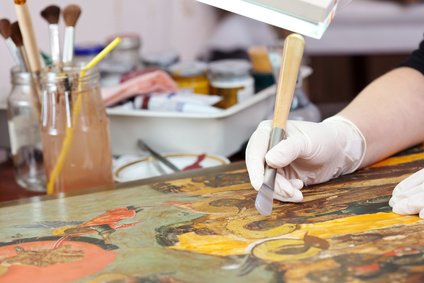Art is a reflection of human culture and history restoration. It is a manifestation of creativity, skill, and vision, capturing the essence of a moment or a society. However, art is also fragile and vulnerable to deterioration over time. Due to environmental factors, human intervention, or simple aging. To ensure that future generations can enjoy and learn from our cultural heritage, art conservation has become an essential and increasingly sophisticated field of study and practice.
Art Conservation
Encompasses a broad range of activities and disciplines, from preventive conservation to restoration and treatment of specific artworks or collections. Its ultimate goal is to preserve and safeguard the physical, historical, and aesthetic integrity of art. While respecting its original context and intent. Art conservation also involves scientific research, documentation, education, and ethical considerations, as well as collaboration with artists, collectors, museums, and other stakeholders.
Preventive conservation is the first line of defense against damage and decay of art. It focuses on controlling and minimizing the factors that can harm artworks, such as light, humidity, temperature, pollution, pests, and human handling. This involves designing and maintaining suitable environments for art storage, display, and transportation, using appropriate materials and equipment, and implementing protocols for handling, cleaning, and inspection. Preventive conservation also includes monitoring and assessing the condition of artworks over time, using various techniques such as photography, spectroscopy, microscopy, and x-ray imaging.
When damage or deterioration does occur
Conservation treatments may be necessary to stabilize or restore the artwork. These treatments can range from simple cleaning and repair to complex interventions that require extensive research, analysis, and expertise. For example, a painting may need to be cleaned of dirt. varnish, or overpaint to reveal the original colors and composition. A sculpture may require consolidation of its surface or structural elements to prevent further cracking or detachment. A textile may need to be re-stitched, re-dyed, or stabilized to prevent further deterioration. In some cases, missing or damaged parts of an artwork may need to be reconstructed. Or replicated using traditional or modern techniques and materials.
Conservation treatments require a combination of scientific knowledge, technical skills, and artistic judgment. They also involve ethical considerations regarding the authenticity, integrity, and significance of the artwork. Conservation practitioners need to balance the need to preserve the artwork with respect for its originality and historical context. As well as the expectations of its creators, owners, and viewers. This requires close collaboration with other professionals, such as curators, and conservators. Historians, scientists, and artists, as well as communication with the public and other stakeholders.
One of the challenges of art conservators is balancing the desire. To preserve an object with the need to make it accessible to the public. In some cases, a conservator may be needed. To make difficult decisions about how to restore an object to ensure. That it can be safely displayed and appreciated by visitors.
Another challenge is the ongoing debate about how best to preserve objects for the future. With new technologies and materials being developed all the time. Art conservators need to stay up-to-date on the latest developments. To ensure that they are using the most effective and appropriate techniques.
In addition to preserving and restoring individual objects. Art conservators also play an important role in researching and studying art and cultural artifacts. By analyzing materials, techniques, and other aspects of an object. Conservators can learn more about the history and context of the object and the society that created it.
In conclusion
Art restoration conservation is a complex and fascinating field that involves the preservation, restoration, and study of art restoration and cultural artifacts. If you are interested in pursuing a career in art conservation. It’s important to have a strong background in the arts and sciences. As well as excellent critical thinking and problem-solving skills. While it can challenging and competitive field, it can also be incredibly rewarding to know. You’re helping to preserve and protect our cultural heritage for future generations to enjoy.
The field of art conservation has evolved, reflecting changes in art, science, and society. In the past, conservation was often perceived as a craft or a trade. With little scientific or academic foundation. Conservation treatments are often based on intuition, tradition, or personal preference, and were not well documented or evaluated. However, in the 20th century, conservation became more systematic and rigorous. With the development of new scientific and technological tools and methods.
Today
Art restoration conservation-restoration is a multidisciplinary and interdisciplinary field that integrates art history, chemistry, physics, biology, engineering, and other disciplines. Conservation practitioners use a wide range of instruments and techniques. Such as microscopes, cameras, lasers, x-rays, and spectrometers, to analyze, diagnose, and treat artworks. They also collaborate with other professionals, such as historians, curators, and artists, to understand the cultural, and social. And aesthetic context of the artwork.
One of the challenges facing art conservation is the diversity and complexity of artworks and materials.
